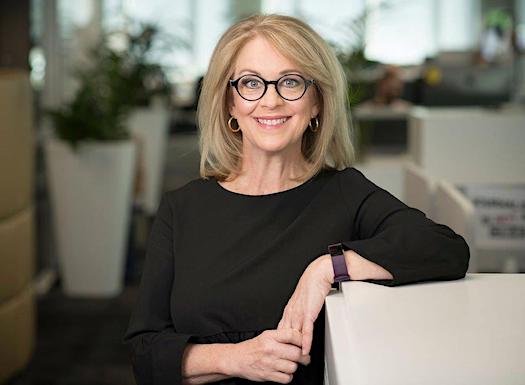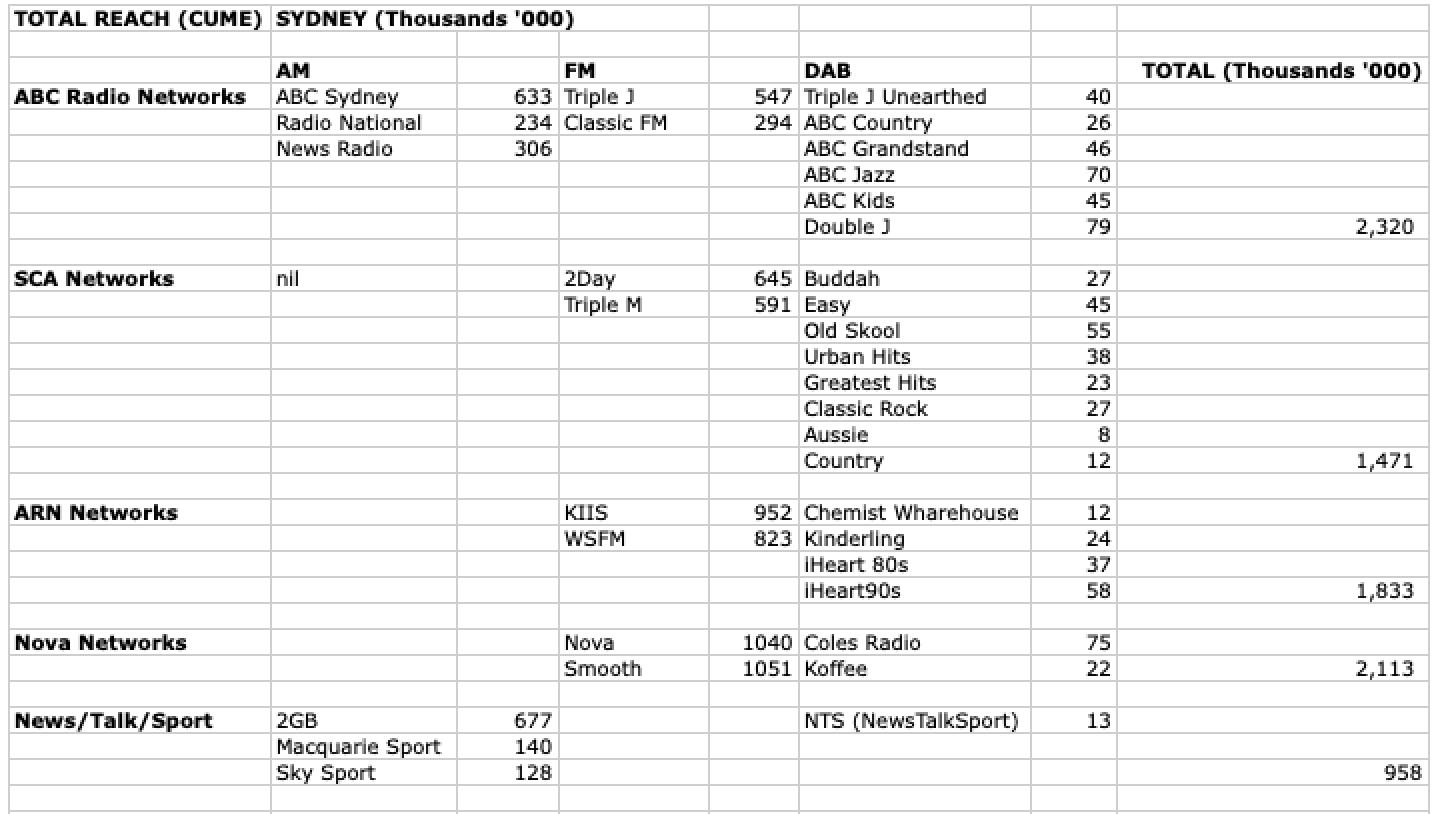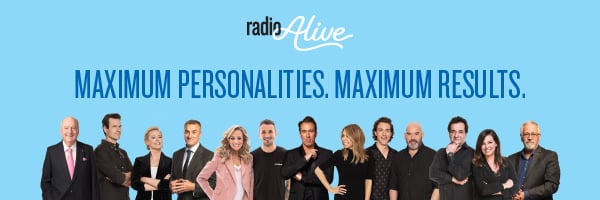Judith Whelan has replaced Michael Mason as Director of ABC Regional & Local.
In this role she runs most, but not all, of the ABC’s radio services.
radioinfo’s Steve Ahern sat down with Whelan to discuss her priorities and find out more about her transition from print to broadcast.
Judith Whelan came to the ABC three years ago as Head of Spoken Content, where she oversaw RN, Grandstand and the capital city radio stations. She went on to take the new role of Head of Specialist Content, in charge of the national broadcaster’s coverage across all platforms – television, radio and digital – in Arts, Science, Health & Technology, Religion and Ethics, Education, Society and Culture. She also oversaw Audio Studios, the ABC’s centre for digital-first, innovative podcasting, and is now Director of the Regional and Local Division.
Priorities
Whelan’s priorities for her first year are to “keep reaching as many people as possible with ABC Radio’s great content.”
There will also be a focus on “where those audiences are going, what platforms and in what forms.”
“There are so many different ways people can listen to things now, such as smart speakers, connected cars, podcasts and apps. It really isn’t business as usual on ABC Radio, we have to look to the future, but at the same time invest in our talent who are great storytellers who know how to tell stories that get to the hearts and minds of the audiences every day.
“ABC Radio is everyday for everyone. Focusing on the every-one, who do we want to reach, where are they, who are the audiences we are not reaching and how might we do that?”
Restructure
Under former Managing Directors Mark Scott and Michelle Guthrie, the old transmission output based divisional structures of Radio and Television were changed to align with audiences. As part of that change, national radio networks were separated from local and regional services, and the local division also took on some television and online services. Whelan explains the change and how she manages it.
“The restructure was about moving away from platforms that were set in the old world. People now are consuming screen and audio content in so many different ways, and are also wanting to get text content about things that interest them. The reorganization was all about genres.
“I’m now in charge of regional and local content, including tv content, grandstand, the regional bureaux and digital output. It includes the live events that bring Australians together.
“Some people think that local just means geographical locality, your street or suburb. But in fact local can mean so many things. Yes, there can be hyper local, for example a story in Dubbo about what is going on in the council and how it will affect people… it allows people to come back through the radio and share stories about that with eachother.
“Radio is one of the best user generated content platforms that we have, we can get stories from the community then expand and share them. But those people in Dubbo may also sit down on a Saturday night and turn on Gardening Australia, where they are connecting to their local community of gardeners… communities of interest… part of the Australian community.
“There are so many levels of local… We tell the stories of people’s lives that connect people… and bring Australians together around a shared celebration or a shared moment.”
Explaining the separation of the national networks from the local networks, Whelan says:
“The old radio division did have radio national and the music networks in it. They are now in a division which has more of a national focus, Entertainment and Specialist.
“There are so many great specialist broadcasters who are now together to tell stories to the whole audience… Catalyst now is not just thinking of telling the story on the Catalyst tv episode, they will be working with the radio team who are feeding into the expertise of the program, taking content from there and playing it out In the radio coverage in a way that is suited to the platforms that audiences are on.”
Religion, Society & Culture and Arts are now in the Specialist Division. News is still a separate division. The music networks are still under Chris Scadden, who was previously in the Radio Division. As a result of the restructure the music networks are also undertaking screen projects “that are expanding the audiences of triple j, double j and Classic FM,” according to Whelan, who says all the divisions who work with radio “are still a radio community and meet regularly.”
ABC Amendment Bill
There is a Bill before parliament to require the ABC to increase coverage and involvement with rural and regional areas. This is directly in your area, how are you responding to it?
“It is very similar to a bill introduced in 2017 which didn’t get through that Parliament. When the Bill originally came in, the ABC argued then that elements of the Bill impinge on the board’s ability to oversee the work of the corporation… We are in discussions with the government again about that.”
“We already have an advisory council and quite strong regional representation on the board, and have invested a lot in regional staffing recently.
“The ABC has invested $15 million a year extra in the past two years to fund 80 positions in the regions. It means we can report news from the regions over the weekends. We have put a lot of work into digital storytelling, extra training, video, photography and all sorts of storytelling techniques in the regional bureaux, all across regional Australia… The funding is ongoing, Michelle Guthrie restructured funding to free up that money for regional content.
Cross platform skills
What are your thoughts on the cross platform skills that are needed for your radio teams?
“The essential skills is still genuine curiosity and genuine interest in the stories that they are telling. They need the ability to listen to both sides and present a balanced view of a story.
“In a digital world, people do need to have more skills, but there is still room for specialists. Teams need to be able to write, take photographs and tell the story on many platforms, but we still need people with the principle skill of telling the story in the radio medium. Specialist skills are still very important to us.”
Listenership
Your main local stations are slipping in capital cities. What are your thoughts on that?
“What we are not slipping in is the number of people, who are coming to us. The difference here is that the ABC is committed to telling a diverse range of stories to as diverse an audience as possible. We are telling stories for every demographic.
“The surveys fluctuate but the five city share has been pretty stable over the past 18 months. We brought in some changes in 2018 and we did see a drop in share. It took a while for the audiences to come back after those changes, particularly the double header breakfast and the flow through the day, as always we are looking at all that.”
Will double header breakfast shows remain?
“Yes they will, they are actually doing well for us at the moment.”
Whelan’s focus is not just on any one station, but on the overall ABC share and reach.
“We know that listeners are dipping in and out of the metro stations, then going to RN, triple j and listening to podcasts on ABC Listen. We have a clever audience that are seeking different stories and know where they can find them.
“This year to date our local radio five city share is 8.4% and last year it was 8.5%.
“Reach (cume) has remained very strong, this year we are up slightly on last year by 22,000 listeners. That gives us a reach of around 2 million people per week.
“Our total Sydney audience is line-ball with the market leader – 2GB. ABC Radio Sydney in the last survey had 633,000 listeners, just 44,000 fewer than 2GB.
“It is the same story in Melbourne. In the last survey, ABC Radio Melbourne reached 676,000 Melbournians, just 33,000 fewer than Melbourne’s market leader 3AW… Reach has always been our goal.”
We fact checked Whelan’s claims about reach, using Sydney as an example.
Result: Correct  See the chart below (click to enlarge).
See the chart below (click to enlarge).
Examining the cume of all the ABC’s services (AM, FM and DAB+) against all the services of commercial competitors by company, the ABC had more listeners in total than other networks across all its broadcast services. The chart below shows the example of Sydney where the ABC’s services have 2.3 million listeners, compared with Nova’s 2.1 million listeners, SCA’s 1.5 million and ARN’s 1.8 million. ABC Sydney on AM 702 has 633,000 listeners compared with 2GB873’s 677,000 listeners. The story is similar in other capital cities.
Podcasts and Catch-up listening
“It’s growing all the time. The biggest use of our Listen App is for the live experience. They love to be able to carry their radio with them and listen in real time.
“We are finding a lot of people are using catch-up, especially RN. RN was one of the first networks to really embrace the value that podcasting could give.
“The most successful podcast we have is Conversations. That is so big… there are more than 4 million downloads of that program per month.
“Because there is no industry accepted measurement system for podcasting, we tend generally not to release the figures, but we look at them internally. We have also had particular success with Ladies We Need To Talk, The Pineapple Project and All In The Mind…
“The world of podcasts is endless, we are thinking about how to make them more discoverable for people.”
Smart Speakers
“We absolutely have to be on smart speakers, it’s another platform that people want to hear us on. We know that a lot of people are using smart speakers as a default radio.
“There is also potential for us to be able to answer people’s questions, particularly in specialist areas, such as science questions. We can deliver information to people who want to know the answer to something by asking us via their smart speaker.
“ABC is the most trusted media organization in the country, so we need to be able to deliver our own trusted content in the right way on these devices.”
Judith Whelan was previously editor of the Sydney Morning Herald, as well as its news director and the editor of its weekend edition, a role she took on after more than seven years as the editor of Good Weekend. Her career in journalism spans more than 30 years and includes experience as a Walkley-nominated news and feature writer, senior editor and a foreign correspondent in both the Pacific and Europe.
She was confirmed in her current position last month after acting in the role since Michael Mason retired last year.
How has she found the transition from a career in mostly print journalism to now working in broadcast?
“It’s exciting!
“What hasn’t changed is audiences. At heart I’m a storyteller. When I travel to other places or go downstairs to 702 I love the stories and how we tell those stories.
“I’ve always loved radio, I was excited by the size of the audience and the range of stories that can be told on radio. The intimacy of it… people can be so engaged in it. I have always loved the engagement of good journalism.
“Radio has that level of engagement, you can be listening while driving home and don’t want to get out of your car because of what you are listening to. It expands people’s minds and their lives and helps them engage with the world. To listen to your favourite show and hear about new things, then be able to talk about something you didn’t know about before expands our minds and our lives.”



